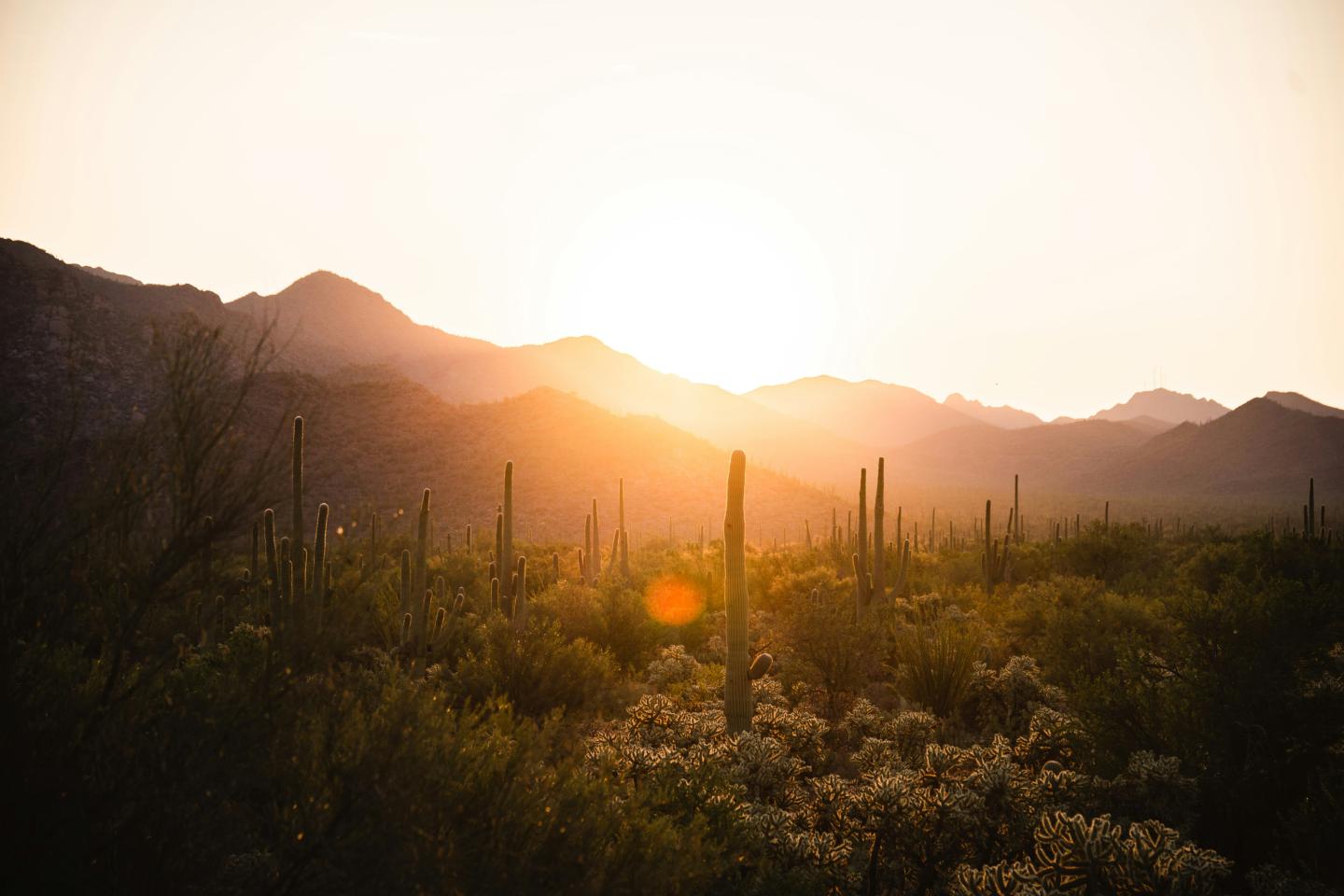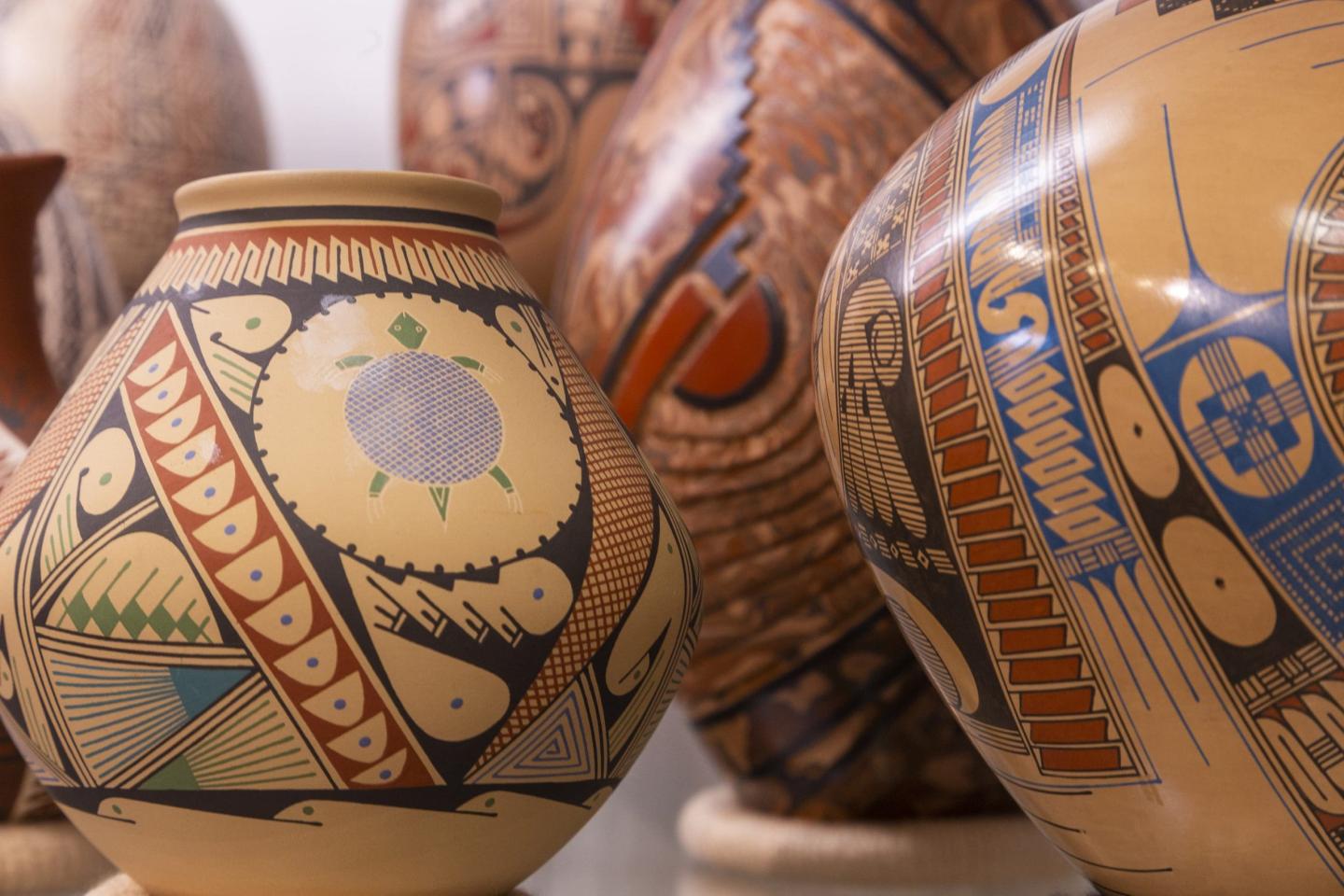
The History of Carlsbad Caverns National Park

On October 25, 1923, President Calvin Coolidge designated, “a limestone cavern known as the Carlsbad Cave, of extraordinary proportions and of unusual beauty and variety of natural decoration,” as the National Park Service’s newest National Monument. Over the last century, millions of visitors have been enthralled by the vast cave chambers hidden beneath the Chihuahuan Desert in southeastern New Mexico. In 1930, Congress re-designated the park to its more recognizable name, Carlsbad Caverns National Park, and in 1995 it was recognized as a World Heritage Site by the United Nations Educational, Cultural, and Scientific Organization (UNESCO). Having international protection is something worthy of celebration!
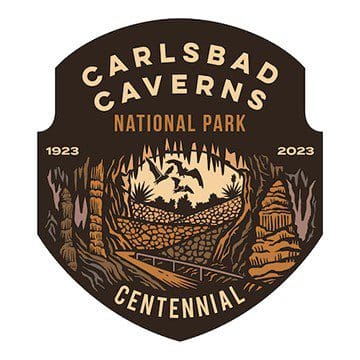
Speaking of celebrations, on October 25, 2023, the National Park Service will be formally commemorating the centennial anniversary of the park’s creation. With the support of Western National Parks Association, visitors to Carlsbad Caverns National Park that day will be rewarded with special interpretive programs, a public reception thanking our park partners, and cake. Would it be a true birthday celebration without any cake?
As the National Park Service prepares for the future of cave research and exploration, this anniversary offers us a chance to reflect upon the past. While the centennial story has been exciting to share, the human history of Carlsbad Cavern does not start with the National Park Service. There are a few people worthy of mention that have trailblazed this cavern path.
A question our visitors often ask is, “Who discovered the cavern?”
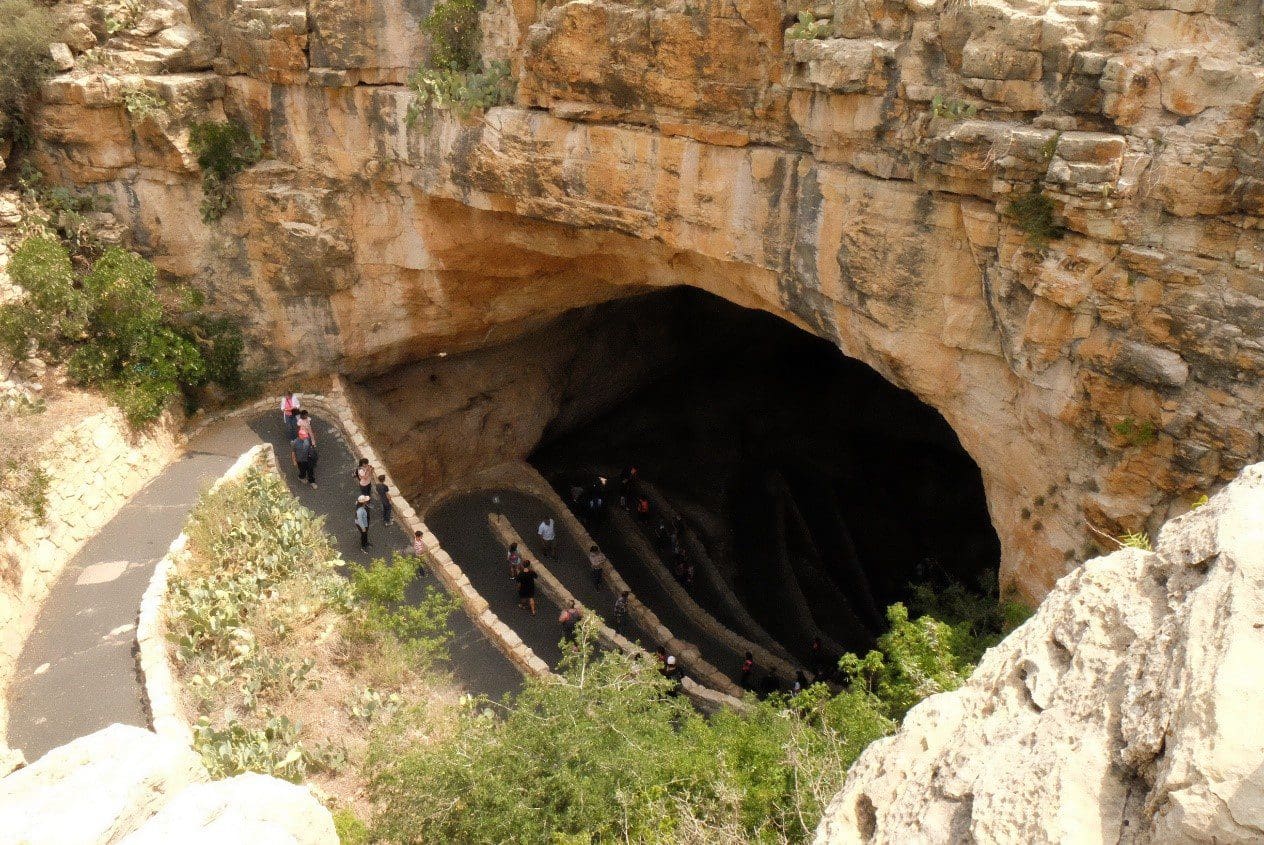
The answer for Carlsbad Cavern is twofold: who found the cave versus who first explored it? We know from pictographs drawn in the mouth of the cave that early North Americans that lived in this area knew of the cave before 900 AD, as well as the Mescalero Apache after them. There are 17 Federally recognized tribes the park honors as original stewards of this landscape. The significant drop at the bottom of the cavern entrance slope may have prevented anyone from entering the deeper cave passages. The first known person to explore the cavern (though this was challenged by others later) was James “Jim” Larkin White.
Jim was born in 1882 and raised in Mason County, Texas, along with six other siblings. At age 10, after completing the third grade, Jim was dropped off by his father at the well-known XXX Ranch (called the Washington Ranch today), located at the edge of the Guadalupe Mountains to learn how to be a cowboy.
Six years later, in the summer of 1898, Jim caught sight of what he thought was smoke on the horizon from a brush fire or volcanic eruption on top of the mountains. Upon reaching a huge vertical mouth of a cave, the smoke turned out to be the exodus of “millions” of bats. After watching this vortex for hours, he surmised that any cave that could house so many bats must be incredibly big.
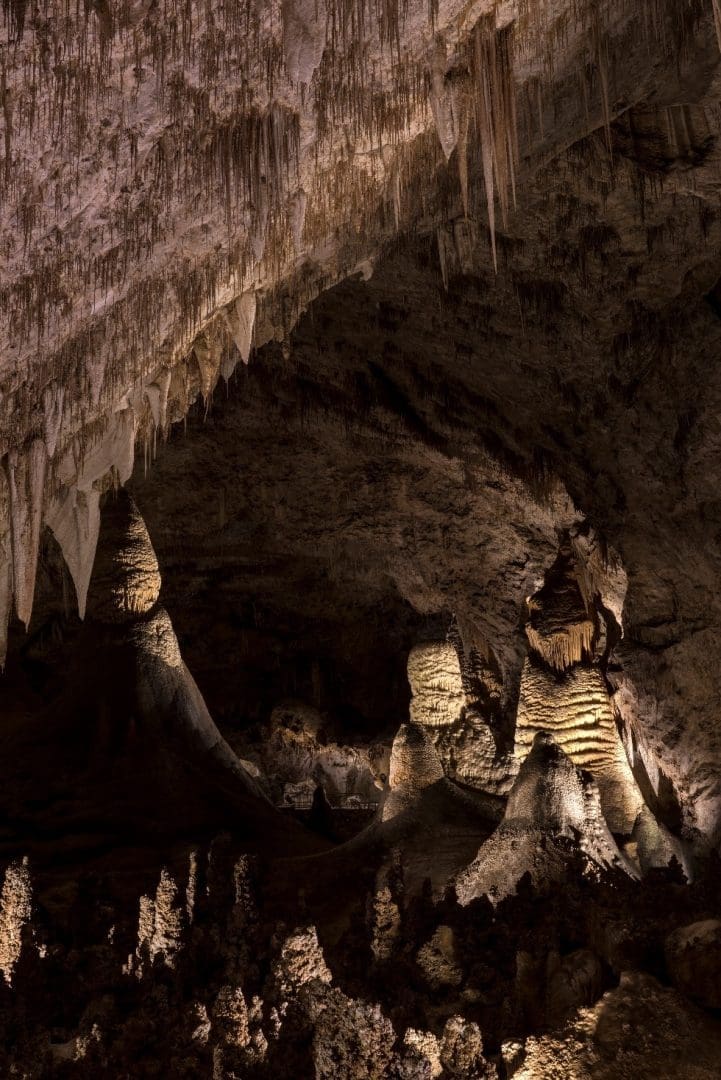
Jim’s curiosity about the big cavern drove him to make a hand-made cable ladder out of fence wire and cut tree limbs. His lantern was primitive. It was a tin coffee pot that he poured oil into from the top and stuffed a wick down the long spout, the flame casting an ominous shadow in an unfamiliar setting. There is brief mention of a Mexican American “kid” accompanying some of Jim’s early cavern trips, whose identity has unfortunately been lost to history.
Jim had dropped into a very large linear passage, with only two directions to choose from. Toward the sunlit direction, the rugged, boulder-covered floor ascends to where the bats roost, the highest level of the cave. Towards the blackness, the passage descends toward the Big Room, 750 feet (228 meters) below the surface. Entering the dark zone, he had no idea that what he was about to see would draw people from all over the globe!
Jim entered the cave when the bats were in-season, typically between May and October. Several years later, Abijah Long sought Jim out, having heard about the huge guano deposit in “Bat Cave.” After Jim showed Abijah the guano, he wasted no time filing a claim to mine it, which he did on March 28, 1903. Abijah then offered Jim to be his foreman of operations.
Abijah then hired many men to build a road up to the cave and become miners. Due to the high operations and freight costs, Abijah sold the claim and equipment for $500 in 1906. Sometime after this, Jim and Abijah had a falling out, as neither one mentions the other in their respective books about the discovery and mining history of Carlsbad Cavern.
Jim stayed in the guano mining business at “Bat Cave” for 20 years, even though the ownership changed hands multiple times. In 1912 at age 30, the same year that New Mexico became a state, Jim married Fanny Jane Hill. They needed a place to live, and the Carlsbad Guano and Fertilizer Company, who owned the operations at that time, built them a 2-room shack close to the cave and paid Jim a salary of $175/month.

Two young travelers dropped by one day to see the cavern but needed some flash powder to take pictures. Jim sent them into town to buy some from the local photographer. They returned with the photographer, whose name was Ray V. Davis. Ray’s first 24 photographs of the cavern were the turning point in the cavern’s future. Has a photograph ever influenced your travels?
After the townspeople of Carlsbad saw the Ray V. Davis pictures of the King’s Palace, some of which were later published in the New York Times in 1923, Jim was getting hounded to take them through the cavern. Excursions started with Jim lowering amateur cavers down the mining shaft with the guano bucket, two at a time. Some of the people on the early trips are ancestors of current residents of Carlsbad. On September 15, 1922, an editor of the Carlsbad Current Luther Perry, wrote, “Carlsbad has one of the wonders of the world at her very doorstep but does not realize it.”
In April 1923, the General Land Office in Washington D.C. sent a surveyor to the cave to determine if it was worthy of protection. Mineral Examiner Robert Holley completed a month-long survey of the cave. His report concluded that the cave was very worthy of National Monument status. Due to this report (with photos by Ray V. Davis) and letters from Major Richard F. Burges, a prominent El Paso attorney, President Coolidge declared the cave a National Monument on October 25, 1923.

Afterwards, Jim White was issued a permit by Stephen Mather, Director of the National Park Service, to operate the cave at his own expense. Jim led government scientists through the cave, namely Dr. Willis T. Lee, a USGS geologist, who conducted a six-month National Geographic expedition to photograph, survey, and build trails in the cave. Accompanying the group was Dr. Vernon Bailey, a USDA biologist, who came to study the bats.
The National Park Service (NPS) took over operations in April 1926, and Jim was appointed Chief Ranger. He now led tours through the cave lit by electric lights, powered by a 25-horsepower gasoline generator operated by his wife, Fannie.
After the publication of Ray V. Davis photographs of Carlsbad Cavern and the articles in National Geographic Magazine by Willis T. Lee, the cavern became famous. People were suddenly alleging to be its discoverer. To be clear, Jim never claimed this role himself.
In 1924, there was a gathering of dignitaries for a grand tour of the cavern, 120 people in total. Afterwards, they gathered at the Washington Ranch for a barbeque. Lots of speeches followed the meal and someone in the crowd asked to hear from Jim White, at which Colonel Etienne de Pillesar Bujac, a Carlsbad lawyer, got up and introduced Jim as “the discoverer and first explorer of the Carlsbad Cavern.” That title stuck because of the reporters. The only person to challenge the first explorer title was Abijah Long, the first guano miner.
If it wasn’t for the bravery of others to explore deep into Carlsbad Cavern and discover its wonderous beauty, this cave may have never become a national park. Regardless on who history labels as the first discoverer of the cavern, the resource itself inspires each visitor to have a unique experience. You can retrace Jim’ White’s footsteps through the Natural Entrance, descend the steep Main Corridor, and loop around the Big Room. However, the modern extent of the national park extends far beyond anything the early explorers could have imagined. The park’s legal boundary protects 118 other caves, including the famous Lechuguilla Cave, and a biodiverse desert ecosystem in full bloom. Only time and curiosity may reveal what additional secrets still lay undiscovered in total darkness at your national park.
By: Anthony Mazzucco and Mark Joop
Park Rangers, Carlsbad Caverns National Park



